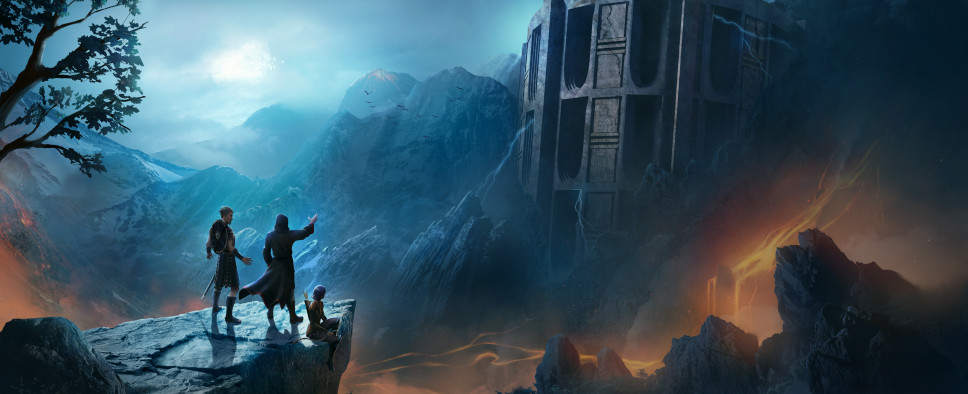Tower of Time Review - Page 2
-
Category: ReviewsHits: 13769

Article Index
The biggest one is the fact that whenever you open your map screen, you get a handy checklist of things to do. At any moment you can see exactly how many battles, quests, treasure chests, upgrade materials, and secret passages each level holds. And that kills all the mystery that comes with not knowing what to expect as well as the satisfaction of discovering something off the beaten path.
Many of the quests also require quite a bit of backtracking, and even though you can increase your characters' running speed in the settings and there are plenty of handy teleporters scattered throughout the levels, you'll still be doing quite a bit of legwork. And seeing how all the battles happen in predetermined locations, after you're done with them, you're not even in any danger during those prolonged jogging sessions.
When not exploring the tower, you'll be able to take a break on the town screen. There, you will upgrade and enchant your equipment, level up your characters, and restore a series of neglected utility buildings.
All in all, experiencing the story bit by bit, collecting notes and ancient journal entries, following side quests across multiple floors - that's where the game shines. While running from room to room, and clicking on chests and various lootable items is simply the price you have to pay for getting to the good parts. Mostly because, as I've mentioned, there's no mystery and the loot is not that exciting. But more on that in the next section.
Combat and Crafting
You don't create a character in Tower of Time. Instead, there's a roster of seven unique heroes. Each of these heroes comes with a personality, weapon and armor preferences, and up to eight active skills. Each of those skills that range from buffs and area of effect attacks to summoning spells and arena-manipulating abilities has alternative upgrade paths. But on the flip side, you can only select four of them at a time. The developers seem to be fond of that number, and as such, your combat group has enough room for up to four heroes.
Now, while I definitely prefer turn-based combat systems, I have nothing against real time with pause battles of pen and paper-inspired RPGs. But the thing about those games is that you usually have so many options that combat becomes more of a test of your character-building skills than anything else. When you only have four characters with four skills each, things can get real stale real fast. And in Tower of Time they unfortunately do.
Whenever your heroes stumble onto a group of enemies, you get teleported to a battle arena that has very little to do with the map you were exploring. The game has only a handful of those arenas per floor, and even so, they never really impress you with their clever designs and tactical challenges.
What usually happens is you place your heroes, start the battle, and wait for the enemies to spawn. They do, you defeat them, and then the next wave of enemies spawns. Rinse and repeat. Sure, the developers try to spice things up a bit by providing you with various added challenges, like having to protect a couple of points or destroy a series of enemy-spawning portals, but at the end of the day you will still be fighting waves of enemies while being armed with a very limited arsenal of skills.
On top of that, continuing the game's trend of discarding any semblance of mystery, before a battle starts you can see exactly who you'll be fighting along with their stats, skills, and weaknesses. And even though the game has a fairly wide selection of enemies, after a while they all blur together into an indistinguishable mess. Protect your ranged characters, don't stand in red circles, don't run out of mana. Doesn't matter who you're fighting. If you follow these three easy steps, you'll come out on top. Playing on the fourth out of the game's five difficulty levels, I had to redo only a couple of battles over the course of its campaign that can take you around 30-40 hours to complete.
Pretty much the only thing I liked about the game's combat is how it handles pausing. By default, instead of a time stop, pressing space slows the action down to a crawl, shows you which enemy targets which of your party members, and allows you to consider your next step. But because the battle is still happening, albeit very slowly, you still feel some tension, even if it's all just a clever trick. Now, if you don't enjoy this approach, there's an option to switch to the traditional pause, but I wouldn't recommend it. The default way of doing things is quite neat.

